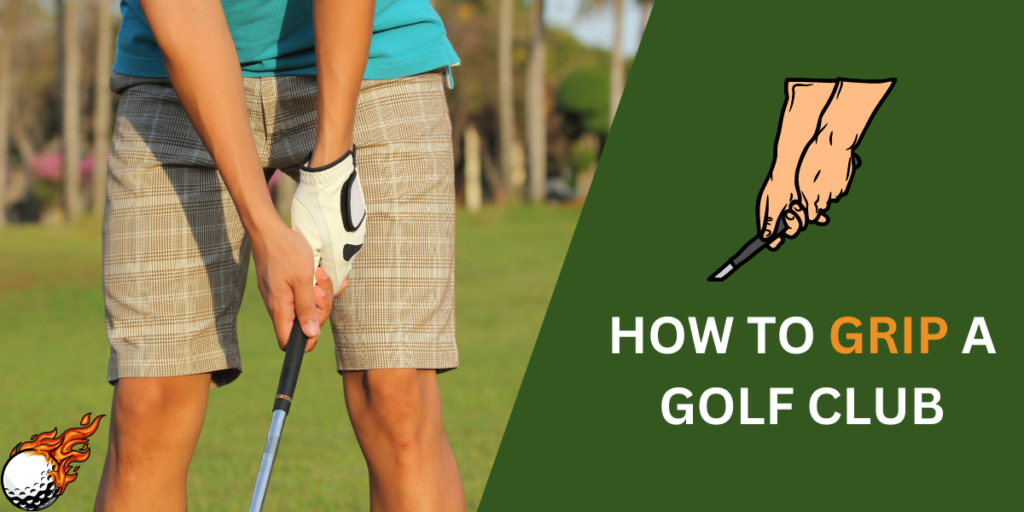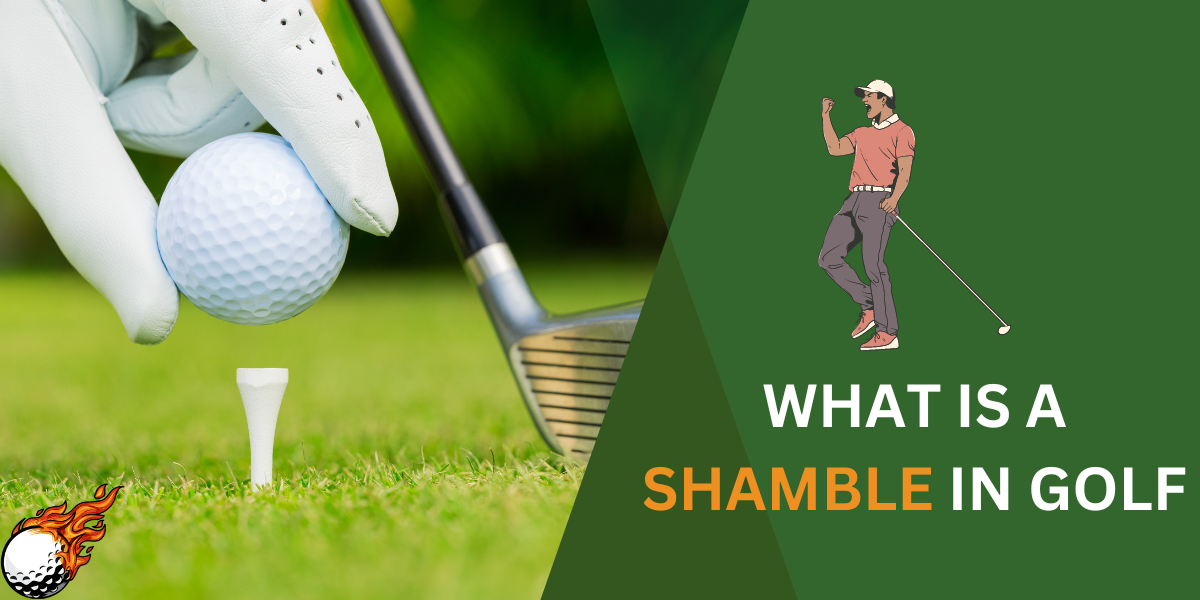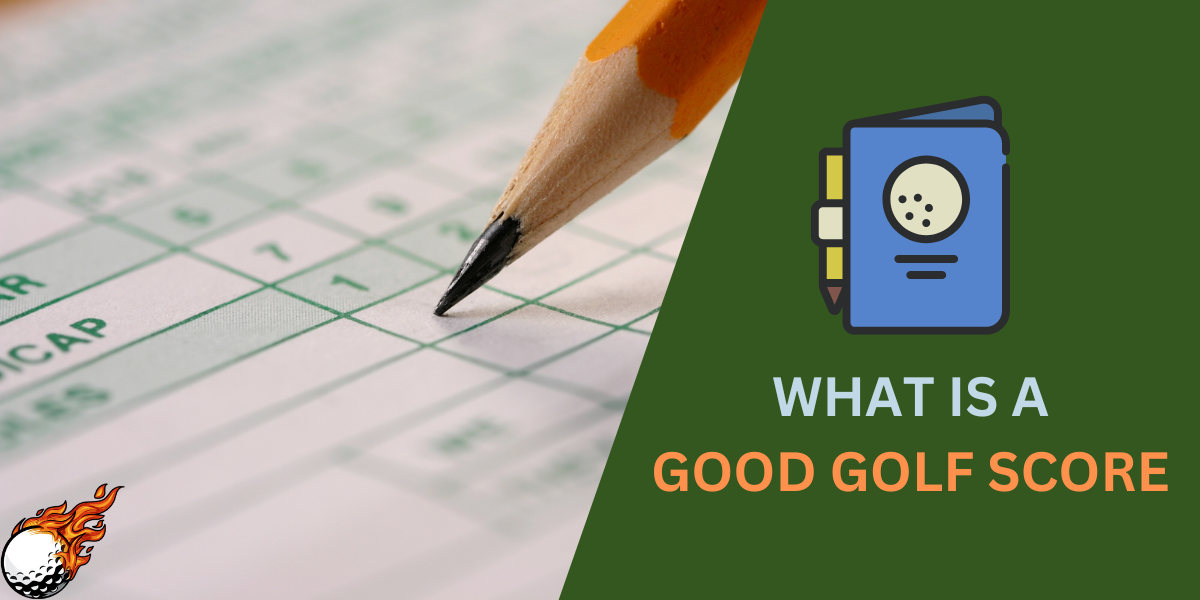
Have you ever hit a golf shot that went way off course?
Chances are, your grip could be the problem.
A bad golf grip can mess up your whole game.
It can make your shots weak, make the ball curve like crazy, and leave you frustrated.
The good news is that fixing your grip is the first step to hitting straighter, longer shots!
This guide will teach you the perfect golf grip – whether you use your right hand as the lower hand (trail hand) and left hand as the upper hand (lead hand) or if you’re a lefty.
We’ll cover things like finger placement, thumb position, and even different grip styles like the interlocking grip and ten-finger grip.
Your golf grip is the foundation of good shots!
- Mainly in the middle finger, not your palms. This gives you power and control.
- Try different grip styles. The main ones are overlapping, interlocking, and baseball grip. Use what feels most natural for you.
- Check that “V.” The “V” shape between your thumb and index finger on your lead hand should point towards your right shoulder (if you’re a right-handed golfer).
- Grip size matters! Get fitted at a golf shop to find the perfect size for your hands.
- Practice even when you’re not golfing. Drills help make a good grip automatic.
The Fundamentals of a Great Golf Grip
Let’s face it: How to hold a golf club properly is something other than rocket science.
But it’s one of those things that makes a HUGE difference in your golf game.
Mess up your grip, and your golf swing is probably going to be a mess, too.
So, let’s get this right!
- Grip Pressure: It’s Like Holding a Baby Bird. You don’t want to squeeze a baby bird, but you also can’t let it fly away. Apply that same idea to your golf grip. Hold the club firmly but not so tight that your knuckles turn white.
- Fingers Rock, Palms Not So Much A good golf grip starts in your fingers, not your palms. If you rest the club handle too much in your palms, you’ll lose power and could send the ball flying off in weird directions.
- The Lead Hand: Your Main Guide For right-handed golfers, this is your left hand. Place it on the club so the handle runs from the base of your pinky towards the top of your index finger. Curl your fingers around and let your left thumb rest along the top of the shaft.
- The Trail Hand: Your Backup This is your right hand, and its job is to support the left. Place it slightly below, with your right thumb crossing over your left. Aim to see at least two knuckles on your left hand when you look down.
Pro-Tip
Have you ever heard of Arnold Palmer, one of the greatest golfers?
He said to imagine your right ear touching your right shoulder.
This helps you get that perfect grip angle!
Grip Styles – Which One Is Right for You?
Think of grip styles as different ways to hold a pencil.
There’s no single “best” way; it depends on what feels right for you!
Here are the three basic types…

- The Overlapping Grip (or Vardon Grip): This one’s the most common, even among pro golfers. You take the pinky of your trial hand and overlap it between the index and middle fingers of your lead hand. If it feels right, this is a great place to start.
- The Interlocking Grip: Instead of overlapping, you interlock your pinky and index fingers – it’s almost like they’re holding hands! This creates a really solid connection between your hands.
- The Baseball (or Ten-Finger) Grip: Just like it sounds, you use all your fingers with no overlap or interlocking. This can be good for amateur golfers with small hands.
No One-Size-Fits-All Solution The most important thing is finding what feels natural and lets you swing with power and control. Try these different styles at the driving range and see what produces the best results.
Could you check the V: No matter what style you choose, look down at your lead hand. The “V” made by your thumb and index finger should be pointing somewhere between your right shoulder and your chin. That’s a sign of a good, neutral grip.
Pro Tip: Need some visuals? There are tons of videos online showing these grips up close. Search for “golf grip instruction” and take a look. Some golfers, like Todd Kolb on the PGA Tour, even break down these tiny differences for you!
Troubleshooting Common Grip Issues
Even with the basics down, you might accidentally slip into a bad grip. Here’s how to spot some common problems and fix them before they wreck your round:
Weak Grip: The Slice Maker
- Spot the Signs: Your lead hand (left for righties) is turned too far under the club handle. When you look down, imagine the clubface pointing almost at the sky.
- The Problem: This usually makes the ball slice (curve hard to the right for right-handed golfers). It can also make your shots weak and off-target.
- The Fix: Rotate your lead hand slightly on top of the grip. Make sure that the “V” between your thumb and index finger points more toward your right shoulder.
Strong Grip: The Hook Machine

- Spot the Signs: Your lead hand is turned too far on top of the grip, and you might see more than two knuckles. The clubface almost looks closed when you address the ball.
- The Problem: This one can cause hooks (big curves to the left for righties), shots that miss the green way left, or, worst of all, loss of power.
- The Fix: Turn your lead hand slightly back so you see those two knuckles at the address.
Inconsistent Grip: The “Where’d That Shot Go?” Problem
- The Problem: When you grab the club differently each time, your shots go all over the place! One might be great, the next a total disaster.
- The Fix: Create a routine. Before each swing, take a second to wiggle your hands into position, find that “V,” and make sure the club feels right. Consistency is the secret to success in golf!
Pro Tip: Sometimes, you hear about adjusting your grip to fix a slice or hook on purpose. That’s more advanced stuff! First, master a good neutral grip, and the rest will follow.
Beyond the Basics – Advanced Grip Tips
You’ve got the fundamentals; now, let’s take it up a notch!
These tips can really fine-tune your game:
Get the Right Fit: Grip Size Matters
Your hands shouldn’t be squeezed into the grip, and there shouldn’t be much extra space, either.
Think Goldilocks – it needs to be just right.
Too small a grip can make you hold it too tight, while a big grip makes it hard to turn the clubface over.
Golf shops can help you find the perfect size.
Use That Wrist Hinge!
A good grip lets your wrists hinge properly in the backswing.
This is where a lot of power comes from!
If your grip’s off, your wrists will feel locked up, and your drives will lose some serious distance.
Drills for the Win! Practice makes perfect, even with your grip! Here are a couple of easy drills:
- The Takeaway Drill: Place a tee under the grip on your trail hand. Take some slow-motion practice swings – if the tee falls out, your grip needs adjusting.
- The Paper Towel Roll Drill: Take an empty paper towel roll and slide it halfway onto your grip. Do some practice swings, keeping the roll positioned correctly. This helps you learn that “in the fingers” feel.
Pro Tip: There’s a whole world of advanced grip adjustments out there, like weakening or strengthening your grip for specific shot types. But for now, master the basics, and the fancy stuff can come later!
Conclusion:

Grip It and Rip It!
Okay, hold on to the club while you swing... but seriously, a good grip is a HUGE part of hitting awesome golf shots.
The left palm is very important to control the club grip.
It might seem like a small detail, but a proper golf grip sets you up for success.
Remember, try a few different styles and see what feels most natural.
Practice makes perfect, so spend some time working on your grip even when you’re not on the course.
Once you’ve got it down, you’ll be surprised at the difference it makes!
Now, get out there and give it your best shot.
Lower scores are just around the corner!
Frequently Asked Questions
How do I know if my grip size is correct?
A grip that’s too small will force you to squeeze too tightly, while a grip that’s too large can make it hard to control the clubface. Ideally, your fingers should lightly touch your palm when you have a proper grip. Golf shops can help you find your perfect size.
My hands are small; what’s the best grip style for me?
If you have small hands, the baseball grip (ring finger) might be a good place to start. This grip gives you more contact with the club, which can help with control.
Should my grip change between different clubs (like my driver vs. irons)?
Generally, your grip should stay consistent across all your clubs. This keeps your swing mechanics the same and helps with accuracy.
Can I adjust my grip to fix a slice or hook?
It’s possible, but be careful! You can start by mastering a neutral grip. Once you’re consistent, you can explore slight adjustments, but it’s best to get golf instruction from a pro for this.
Where can I find more help and videos to perfect my grip?
There are TONS of great resources online! Search for “golf grip instruction” along with the specific style you’re interested in (like “overlapping grip”).













